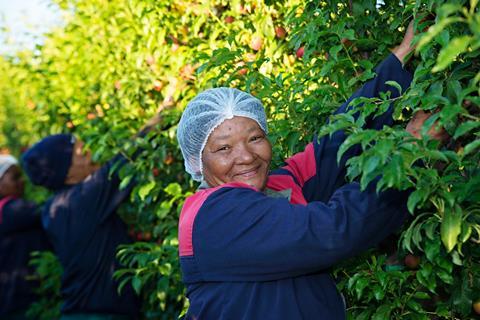With the stonefruit season now up and running, the country’s growers expect an improved campaign – but several challenges remain
The first South African stonefruit crop forecast has indicated a bigger nectarine export crop, a slight increase in plums, stability in peaches but a considerable drop in apricot volumes.

The nectarine industry is bucking the trend in terms of expansion of hectares planted. While the other three categories have either consolidated or dropped, nectarines have increased in recent years.
“In terms of area planted, apricots are stable, peaches are also stable but on a declining trend, whilst the plum industry continues to consolidate and experiences a slight decline in plantings given the extremely poor financial returns realised in the last couple of seasons,” said Hortgro.
“Nectarines, on the other hand, continued their increasing trend, with a 20 per cent percent increase in total area planted.
“After the 2022/23 season that yielded volumes below the crop potential due to various adverse weather events which were exacerbated by logistical challenges – mostly strong winds in the port of Cape Town and capacity/equipment challenges – the early outlook for the 2023/24 stonefruit crop is a positive and stable one,” the industry body outlined.
The industry continues to place emphasis on quality, size, and optimisation of the logistical chain, Hortgro noted.
“The ongoing global cost-price dilemma will continue to exert pressure on operational costs, underlining the urgent need for the entire value chain to scrutinise efficiencies, productivity, and costs,” it stated.
It has been a long, wet winter which resulted in the accumulation of high cold units, adequate water supply and full dams.
This was however followed by a prolonged and relatively cool and wet spring season which affected flowering and fruit set in certain areas.
However, size and quality are expected to improve across all commodities.
Hortgro said the initial stonefruit export estimate showed that apricots were projected to decrease by some 24 per cent with an estimated crop of 450,000 cartons (4.75kg equivalent cartons) being exported. The drop was mostly due to frost that affected some of the production regions.
Peach volumes are set to remain the same as last season with a crop of 2.17m cartons (2.5kg).
Nectarine exports should grow by 1.3m cartons, or 17 per cent, to a crop of 9m cartons (2.5kg). Hortgro said several new orchards planted over the past six years were responsible for this volume growth, along with enhanced fruit quality and size.
In the country’s biggest stonefruit category, plums, exports are forecast to remain stable, following the trend of the previous season.
Volumes should grow by a marginal 3 per cent to 13.6m-14m cartons (5.25kg). This growth is the result of young orchards coming into production.
Hortgro also pointed out that the cool, wet spring had caused variations in flowering and fruit set, but confirmed the industry would have enough plums to service global programmes and commitments.
With the season commencing, worldwide economies were grappling with significant challenges, including consumer spending constraints due to high inflation, Hortgro said.
“However, growers are facing even greater pressure to obtain and sustain profitability,” the industry body stated. ”Essentially, what growers are advocating for is a fair and just return to secure the livelihoods of those reliant on the industry’s value chain.
“Growers are therefore looking forward to a much-improved service from South Africa to its clients across the globe, with an average crop, except for the decline expected in apricot volumes.
”The focus is on providing superior eating quality fruit from South Africa, resulting in delighted customers and repeat sales,” Hortgro added. ”Erratic and extreme weather conditions have battered the industry and country recently, but the industry stood up to these challenges and are optimistic about the season.”



